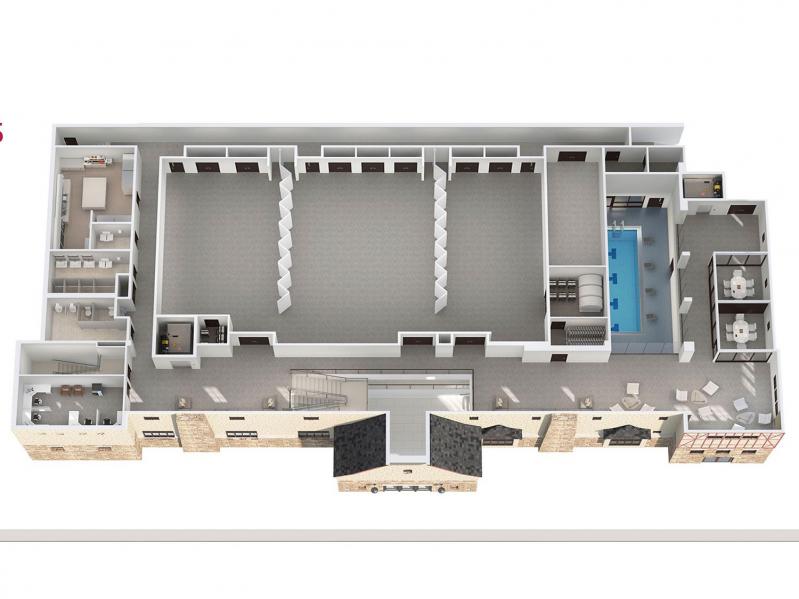It’s easy to take a ceiling for granted. But anyone who watched James Pincott, East Hampton Town’s capital projects manager, update the town board on the work being done at the Montauk Playhouse on Tuesday may have a new appreciation for what’s often just overhead.
On the day of the “big pour,” 25 cement trucks drizzled 250 cubic yards of concrete over an intricate latticework of rebar suspended over what will be the first-floor pool. It’s called a “monolithic pour” because it happens all at once.
“It all has to cure at the same time,” Councilman David Lys said. “It was a conveyor of delivery trucks on a schedule.”
Mr. Pincott happily reported that the $16.1 million project, paid for with a combination of town money, New York State grants, and an $8.25 million donation from the Montauk Playhouse Community Center Foundation, is on schedule, with construction expected to be complete by June 2025.
So, next summer, if you’re swimming in the first-floor, 25-yard, four-lane fitness pool, or the smaller therapy pool, look up and think of all that weight above.
“I’m quite astonished how transformative it is,” Mr. Lys said. “You can see how the building can be used in the future.”
Originally, he said, it wasn’t clear if there would be enough funding for the second floor, which will serve as a multipurpose cultural center, with three large rooms for lectures, meetings, and conferences. “It’s just going to make the flexibility better. I’m glad we were able to find the funding because very shortly you’re going to have a space there that Montauk is very proud of.”
The concrete floor has been polished smooth. “Everything is built upon this, so it has to be pretty much perfect,” Mr. Pincott said.
Motorized partitions with panels that weigh 800 pounds each will act as walls between the rooms. Mr. Pincott explained that the weight of the panels was determined by their sound rating. In order to have simultaneous events in adjacent rooms, the panels had to be thick enough to block sound, hence the weight.
Instead of extending the second floor the full length of the building, it stops short, creating an opening from the pool to the ceiling of the structure, a lightwell. “The light that will shine down into the pool is very dramatic, holistic, and works very well,” Mr. Lys said.
The Playhouse is a Carl Fisher building, built in the 1920s, that had fallen into disrepair before it was donated to the town around the turn of the 21st century. Starting in 2003, the Montauk Playhouse Community Center Foundation restored half the building, which opened as a community center.
“When you add in the architectural aspects of the old Carl Fisher building . . . those are going to be exposed. The blending of a National Historic Register building with a modern use, I think it’s been designed very well,” Mr. Lys said.
Mr. Pincott showed a slide of what the building looked like when work began in April: a 50,000-square-foot empty warehouse with a sandy floor. That space has quickly been diced and organized for future use.
“We started the work only four and a half months ago,” he said. “But for me it seems like a year ago. I can see the progress. I believe the second floor is that step that shows, ‘Yeah, something is really happening here.’ Now you can see it happening, with the framing and individual spaces. It’s really coming to life.”
Sarah Iudicone, president of the Playhouse Foundation board, had a chance to tour the site two weeks ago. “When you see pictures, it doesn’t do it justice,” she said by phone yesterday. “When you see the framing of the space, you’ll know it will be transformative for Montauk.”
She said the board is pleased that construction is going so well. “The construction team is so professional. They coordinate well together and they have biweekly meetings — it’s been great.”
The board’s next step is raising money to outfit the space with equipment and supplies for the programs to take place there. The previous money mostly went toward the building project itself.
“We’ve been so grateful and fortunate for the community continuing to support this, because it is a longstanding project,” Ms. Iudicone said. “With the start of construction, we have new donor interest, which is wonderful.”
With Reporting by Christine Sampson




